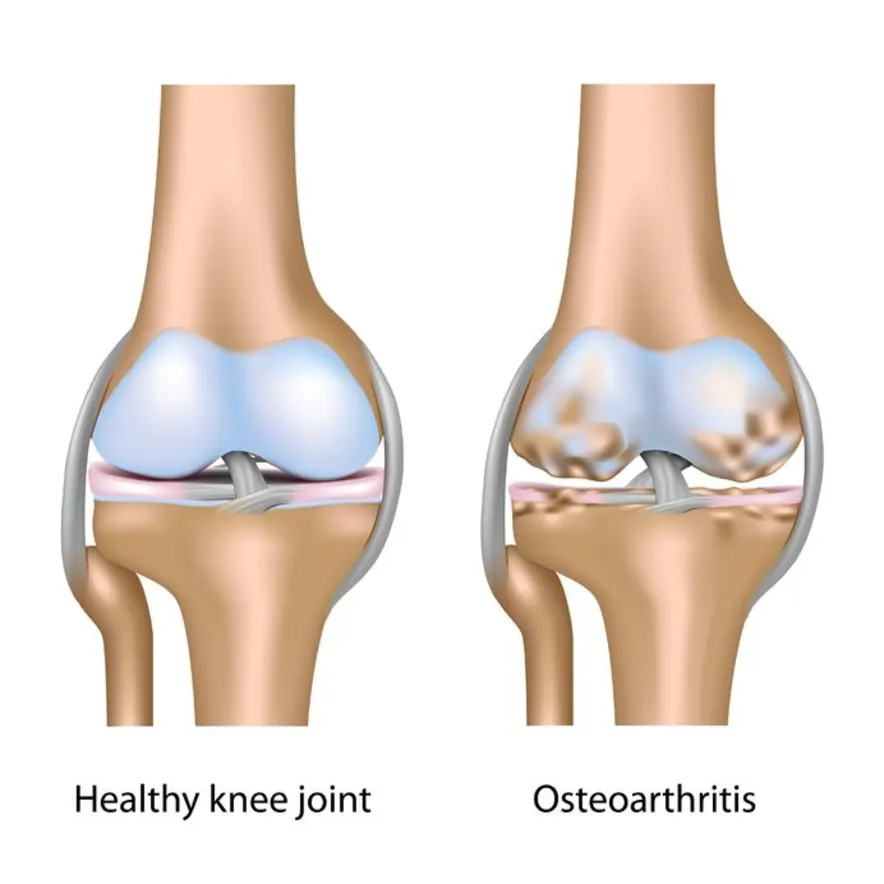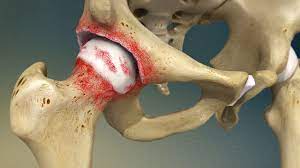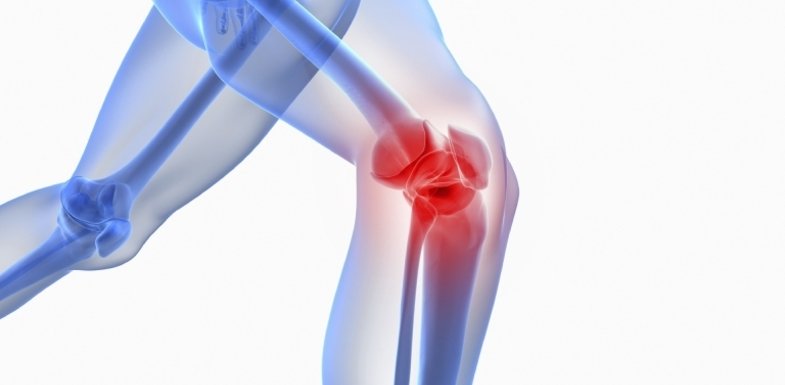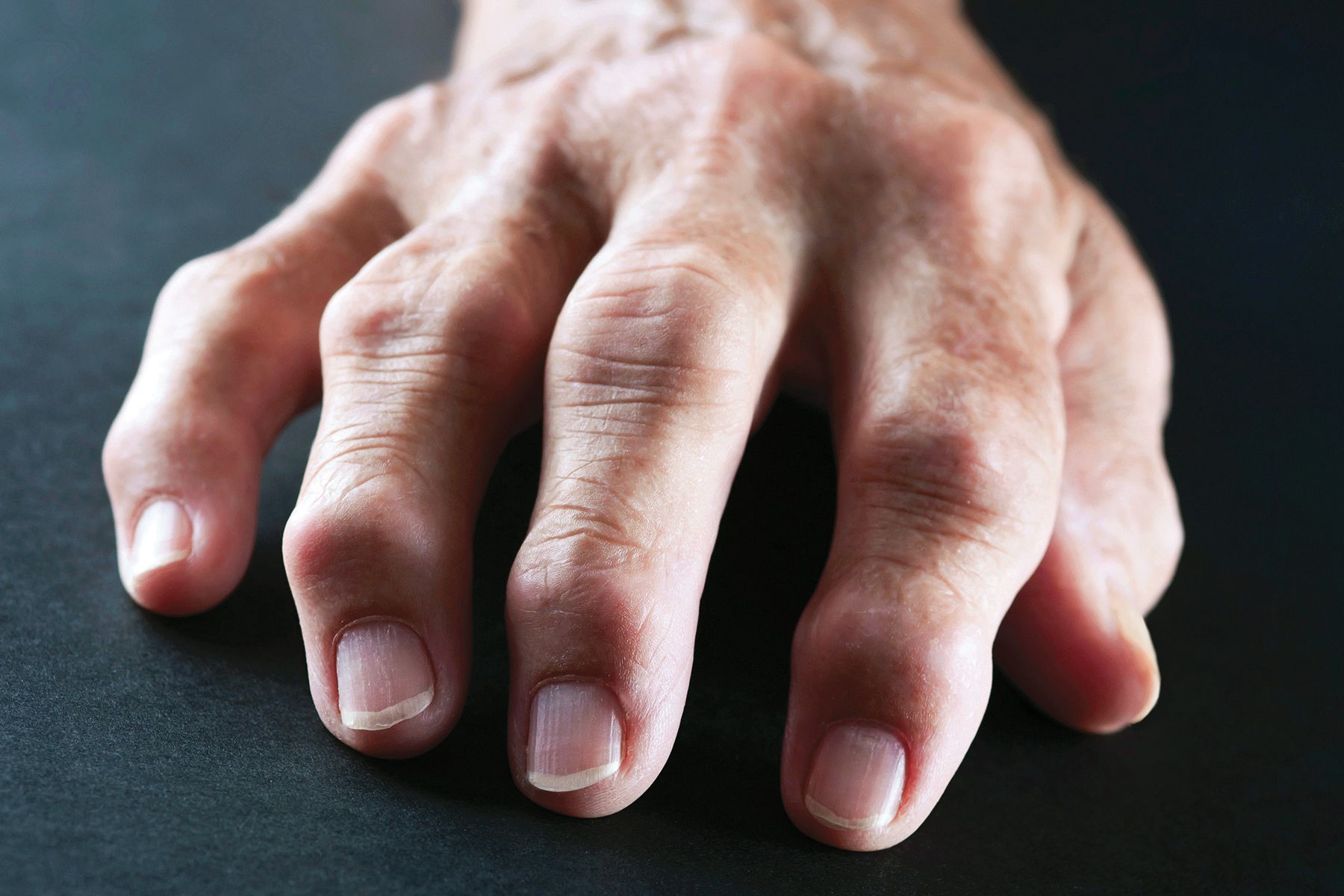Knee, Osteoarthritis, Pathogenesis, Prevalence.
Root cause of disease
Primary osteoarthritis has no known cause. Secondary osteoarthritis is caused by another disease, infection, injury, or deformity. Osteoarthritis starts with the breakdown of cartilage in the joint. As the cartilage wears down, the bone ends may thicken and form bony growths (spurs).
Symptoms
- Pain: Affected joints might hurt during or after movement
- Stiffness: Joint stiffness might be most noticeable upon awakening or after being inactive
- Tenderness: Your joint might feel tender when you apply light pressure to or near it
- Loss of flexibility: You might not be able to move your joint through its full range of motion
- Grating sensation: You might feel a grating sensation when you use the joint, and you might hear popping or crackling
- Bone spurs: These extra bits of bone, which feel like hard lumps, can form around the affected joint
- Swelling: This might be caused by soft tissue inflammation around the joint
Causes
- Primary osteoarthritis is caused by the breakdown of cartilage, a rubbery material that eases the friction in your joints
- It can happen in any joint but usually affects your fingers, thumbs, spine, hips, knees, or big toes
- Osteoarthritis is more common in older people. Using your joints over and over damages the cartilage, leading to pain and swelling
- Water builds up in the cartilage, and its proteins break down. It may start to flake or get tiny tears
- In severe cases, you can lose all the cartilage between the bones of a joint so that they rub together, making it harder and more painful to use the joint
- Cartilage damage can also trigger bone growth (spurs) around your joints
- Osteoarthritis sometimes happens in multiple members of one family, hinting that a gene change has been handed down from parents to children
- Rarely, these cases are caused by problems in collagen, a tough protein found in your connective tissue
Home Remedies to treat Primary Osteoarthritis
Remedy- 1: Green Tea
Materials Used: Green tea
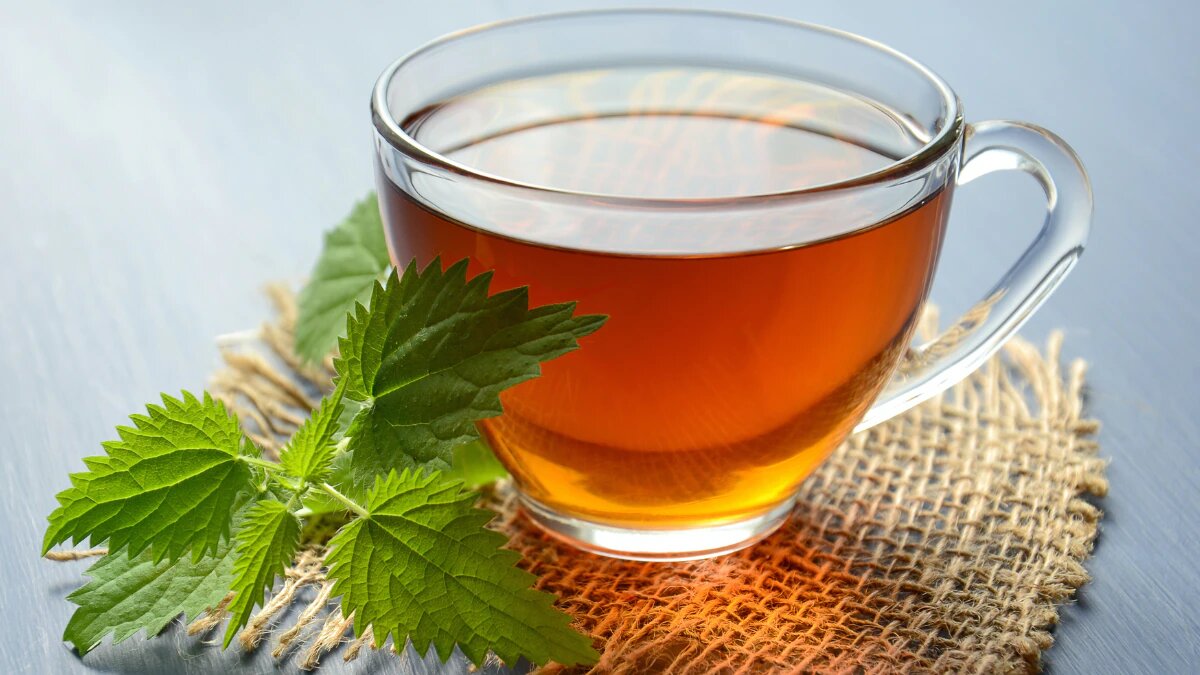
Green tea contains polyphenols. A 2021 review suggests these compounds may help lower inflammation and the need for medications.
A small 2018 study on the use of green tea in treating knee osteoarthritis showed that the tea can help with joint function, but more research is needed to verify these results.
Due to the risk of liver problems and side effects from concentrated amounts, it’s best to drink green tea in moderation.
Procedure:
- Heat the water to just about boiling point
- Add your tea bags to your pot or cup
- Pour the water directly onto the tea bags.
- Stir the tea once, and then let it steep for 1.5-2 minutes
- Remove the tea bags
Product Link: Green Tea
Remedy- 2: Ginger
Materials Used: Ginger

Ginger is also noted for reducing pain from osteoarthritis. According to a 2015 study, taking ginger long-term may even decrease the risk of osteoarthritis-related disability.
Procedure:
- Just add the peeled and chopped ginger and half of the water to a blender (or NutriBullet) and blend into a paste
- Add more water for desired consistency
Product Link: Ginger
Remedy- 3: Turmeric
Materials Used: Turmeric
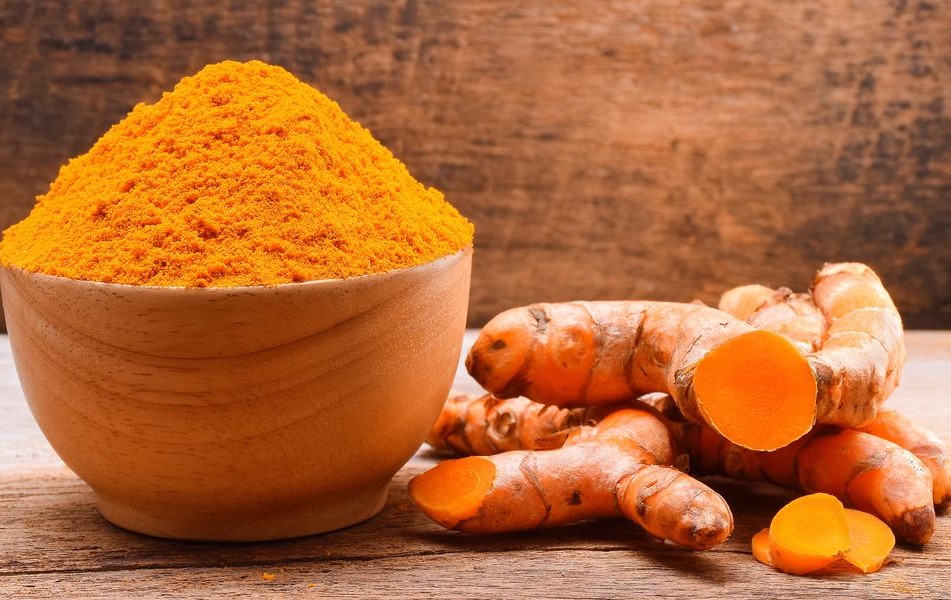
Curcumin is the active compound in turmeric. It’s part of the ginger family but may help osteoarthritis in different ways. A 2016 study on mice with osteoarthritis showed that curcumin may be able to slow disease progression and provide pain relief. However, a 2017 review of clinical studies on humans did not find the same conclusive results. More research is needed to verify the effect.
If you want to try turmeric as a natural treatment, the Arthritis Foundation recommends using curcumin extract, as whole curcumin may be contaminated with lead. Take 500 milligrams twice daily. While turmeric is generally safe, it can cause nausea and may interact with blood thinners.
Procedure:
- Boil 2 cups of water with 1 teaspoon of turmeric powder and 1/2 teaspoon of black pepper
- Let it simmer for 10 to 15 minutes.
- Add lemon, honey, or milk to taste.
Product Link: Turmeric
Other Remedies
Essential oils
Essential oils are another great route for all-natural pain relief. Essential oils including lavender, peppermint, eucalyptus and frankincense have been studied for their anti-inflammatory properties. Try inhaling one for 40 minutes during your daily commute, or add a few drops to your next hot bath. Essential oils, such as rue oils, will relax your muscles and make your pain go away.
Arthritis supplements
New research supports the use of certain supplements for arthritis pain. The Arthritis Fountain recommends a handful of proven supplements, including capsaicin, ASU, cat’s claw, omega-3 and ginger. Check out these supplements to get quick and natural pain relief. In addition, white willow bark is another great supplement for any aches and pains.
Anti-inflammatory diet
Your diet has a big impact on your pain. It’s a good idea to follow an anti-inflammatory diet. This means lots of fresh fruits, vegetables, fish, whole grains and olive oil. You should also try to avoid processed foods, which contain unhealthy compounds like MSG. Some of the best anti-inflammatory foods include leafy greens, cold-water fish, avocados and beans. Overall, you should try to get lots of omega-3, antioxidants, fiber and calcium.
Preventions
Keep a healthy body weight:
Extra weight puts stress on your joints. It can hurt your hips, knees, ankles and feet most. And extra fat causes changes in the cartilage. If you are overweight, talk with your healthcare provider about safe ways to lose weight.
Control your blood sugar:
High blood sugar levels raise your risk of getting OA. If you have diabetes, get your blood sugar levels checked regularly. Talk with your healthcare provider about ways to manage your levels if they are too high.
Prevent injury to your joints:
Joint injuries increase your risk of getting OA. When you exercise, start slowly and work up to your goal. Each time you exercise, take 5 to 10 minutes to warm up with gentle movements and stretches. This helps to prevent injuries to muscles, joints, ligaments, and tendons.
Pay attention to pain:
If you have joint pain that lasts 1 to 2 hours after activity or exercise, you may have done too much. Rest the joint. Use an ice pack to relieve pain.
Consider getting an assessment by a physical therapist to learn the best exercises to protect your joints.

